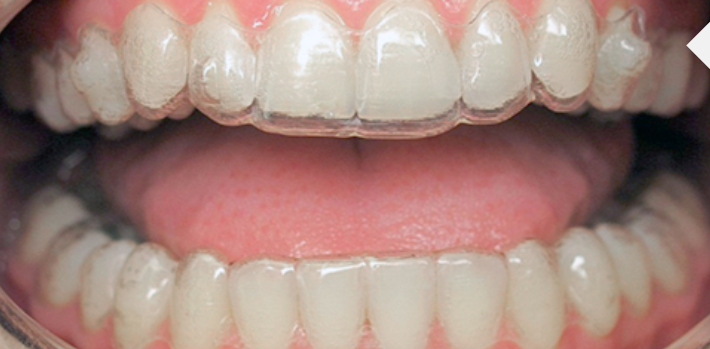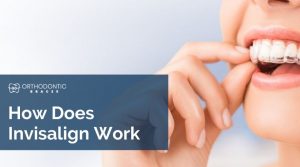Invisalign is a type of braces that straighten teeth using clear plastic aligners. While traditional braces rely on brackets and archwires to repair your orthodontic problems, Invisalign use custom-made aligners that move your teeth in the desired direction.
Every 1-2 weeks you will receive a new set of clear aligners to put on, thus allowing for the correct tooth movement as per your orthodontic treatment plan.
Invisalign Tracking Definition
In order for Invisalign to work, the aligners need to fit snuggly on your teeth. Such a proper fit is called tracking. Good tracking means that your Invisalign trays are closely following the shape of your teeth, with no gaps.
If the aligners are not properly fitting on one of more teeth, we call this poor tracking and your treatment won’t be as effective.
How to Tell if Invisalign is Tracking Correctly

When your Invisalign trays are properly fitting, you won’t be able to see gaps between the aligner and teeth, there won’t be any “air pockets” and your orthodontic treatment would go as planned.
Sometimes, there are issues with Invisalign tracking and, if you look at the image above, you’ll see 2 separate situations:
- upper teeth – the aligners are clearly not tracking properly. They don’t fit correctly and don’t align with your teeth.
- bottom teeth seem to be doing better, the Invisalign is tracking.
What are the Causes of Poor Invisalign Tracking?
Many orthodontic patients have complained of Invisalign not fitting properly, which is another way to say it’s not tracking correctly. Here are the main reasons why this happens:
- new set of aligners – when you get a new set of aligners, you might feel they don’t properly fit. This can be easily solved with an Invisalign “chewie”, which you bite into and it pushes the aligners down on the teeth;
- you might need some extras – like attachments or buttons. There are cases when orthodontists will rely on these to further help your teeth straighen effectively;
- you are not wearing your aligners as instructed – if you don’t wear your Invisalign trays at least 22 hours/day, your teeth will not move at the planned speed and new aligner sets will stop properly tracking;
- your teeth have moved too fast – in some cases your orthodontic treatment might be a little too “fast” compared to the plan. In this case your orthodontist will revise the treatment, order new aligner sets and they’ll surely track better.
What to Do If Your Invisalign Isn’t Tracking
Your Invisalign tracking poorly is not the end of the worls, but it’s important for your orthodontist to be hands on when it comes to your treatment. This is why we recommend getting braces treatment that involves periodic visits to an orthodontist, as even the best planned treatment will not be 100% accurate.
If your Invisalign does fit, make sure you do these:
- try to properly set them on your teeth. By using a “chewie”, you should be able to gently push the aligners down the arches, to make sure they are “seated” correctly.
- take care of your Invisalign aligners. Don’t bite hard on them, don’t wash in scalding water, make sure to clean your trays as instructed, so that you don’t damage them yourself.
- wear your aligners for as much as humanly possible. Orthodontists say at least 22 hours/day. Take them out to ead and clean your teeth, then get them back on.
- backtrack to a previous set. If your orthodontist recommends it, you might “stay” longer at this set of aligners or backtrack to a previous set, in order to make sure the Invisalign is properly tracking and your teeth are moving again into the desired direction.
- revise your orthodontic treatment plan. In rare cases the entire plan needs to be revised. This is done by your orthodontist, of course. You’ll get new Invisalign aligners to wear as instructed.
Always make sure to fully communicate with your orthodontist. You are already in the know about your Invisalign treatment, but your ortho’ is your #1 source of information and care.



